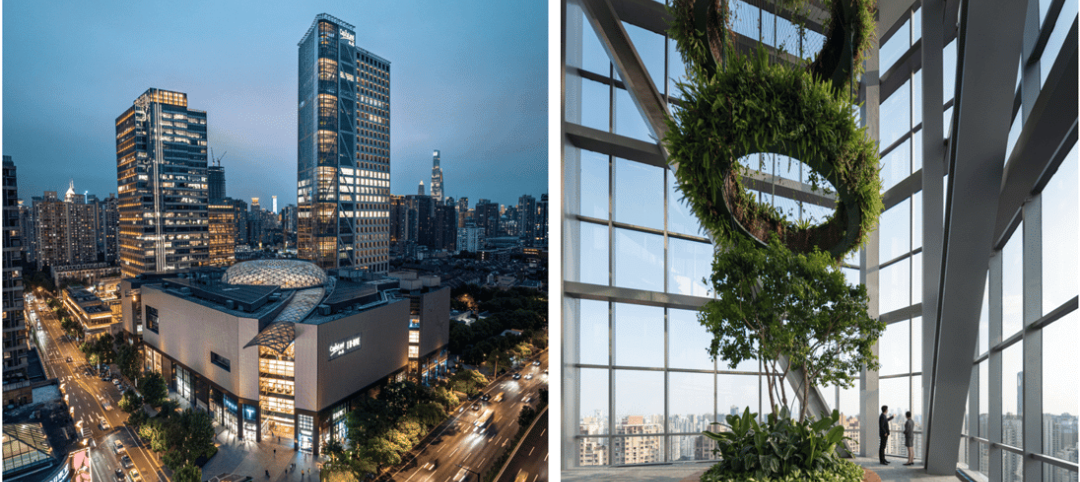Data centers are among the most complex building types, requiring a significant amount of coordination among Building Team members, often with a compressed schedule and in tight spaces. Perhaps no other project type stands to benefit more from coordination using building information modeling and virtual design and construction than data centers.
“Everyone speaks to the benefits of BIM for coordination and clash detection on projects, but when you talk about all of the lines of conduit and other elements that you’re running through what are ultimately very tight spaces, it’s a steroidal environment when you’re talking about a data center,” says Bryant Farland, Senior Vice President and Leader of Skanska’s Mission Critical Center of Excellence. “Coordination becomes just that much more important, therefore, BIM becomes that much more useful.”
Building Design+Construction reached out to several AEC professionals who specialize in data centers to identify the areas of planning, design, and construction where they’re getting the most value out of BIM/VDC coordination. They pinpointed the following:
1. Planning the space
Data centers have huge mechanical and electrical capacities for their footprint—as many as 30 times the typical office building. Furthermore, the equipment is typically concentrated outside the server halls to reduce risk to the IT equipment. Together, these factors create incredibly dense equipment spaces and major duct, pipe, and conduit distribution paths, says Tom Boysen, Senior Project Manager with Sellen Construction (www.sellen.com).
“BIM helps data center designers confirm that the equipment and distribution can all fit, verify maintenance and service clearances, and analyze pressure drop and voltage drop with the actual routing,” says Boysen, who leads Sellen’s data center work. “Underground electrical feeders can be so dense that they could overheat and melt down if not designed properly. BIM’s precise routing allows electrical designers to model the heat dissipation and adjust the electrical duct bank configuration accordingly.”
2. Coordinating prefabrication
Data center clients, whether wholesale operators, tech firms, or financial institutions, are pushing the pace of new construction and retrofit projects. Fast track is passé. Uber fast track is the new standard as clients look to get their facilities online sooner.
To help speed construction, AEC firms are prefabricating many of the building systems and components, from the enclosure to the mechanical and electrical systems. BIM/VDC is vital for designing and testing prefabrication concepts with respect to material handling, path of travel, and installation sequence.
“We’re constantly pushing the amount and types of items we fabricate at our facilities,” says Jason Rahn, Group Vice President with The Hill Group (www.hillgrp.com). “This allows us to minimize the amount of fit-up and welding in a field environment, and it allows us to maintain excellent quality assurance due to the majority of our work being built in a controlled, shop atmosphere.”
Rahn points to a recently completed data center that required 450 welds for the piping systems, of which only 20 needed to be performed in the field. “The reduction in field welding required us to have only one welding machine on site,” he says. “It also decreased the field installation time from about 20 working days to just five.”
One prefabrication tip from Rahn: Make sure to include hangers in the BIM model. “It allows us to fabricate all piping supports and hangers en masse, deliver to the site early, and have installation completed prior to piping and ductwork material deliveries.”
3. Managing project phasing
Data center projects are typically phased to avoid building out expensive capacity that is not needed on day one. Often, the initial capacity target shifts during design and construction due to leasing activity and the difficulty of projecting the need for computer power, says Boysen.
“By adding a phasing element to the BIM model, the team can analyze the cost, schedule, and energy consumption at different phase steps,” says Boysen. “BIM supports phasing by quickly allowing the team to modify the design documents, adding or subtracting modules of power and cooling. Then, after the day-one construction is complete, BIM supports future development with an accurate record of the installed condition, allowing the team to plan future deployments with confidence.”
4. Integrating raised-floor layouts
Raised access floors can be especially tricky, says Rahn, because most floor installers do not model their installations—adjustments for structural bridging and support are typically made in the field. Creating a BIM model of the flooring allows the installer to understand where the MEP systems are located in relationship to the pedestal support systems.
“By coordinating and integrating this into the modeling process, flooring installers can see where they need to modify their support framing early in the process and fabricate the necessary bridging and support components to span across the MEP systems where necessary,” says Rahn. “This eliminates the time and effort it would take to do this in the field once the MEP systems are installed, thus decreasing the field installation time.”
5. Keeping the routing free of conflicts
Transmitting the capacity out of the densely packed equipment requires multiple layers of stacked conduit, duct, and piping. Using the model, the detailers can pick up where the designers left off, adding intelligence to the individual elements. “Tight project schedules don’t allow for field routing to solve conflicts, so the routing must be solved during the detailing stage to allow for 99.99% conflict-free installation,” says Boysen.
6. Enabling commissioning and O&M tasks
Data centers require a robust commissioning process to ensure performance and reliability. Commissioning information tags for each piece of equipment and feeder can be added to the BIM model to keep a live database of commissioning process status.
“As with any new facility construction, the information that is so valuable to the operational staff—namely submittals, O&M manuals, as-built plans, balancing reports, and commissioning reports—is sometimes never transmitted to them, and then often lost over the years as the personnel turn over,” says Boysen.
When this information is inserted into the BIM database, the information can be retained and viewed for each piece of equipment, rather than in separate volumes. “Whether they are facing a problem or trying to improve energy efficiency, data center operators would benefit from a comprehensive set of information,” he says.
7. Analyzing air flow
By incorporating computational fluid dynamic (CFD) simulations into the BIM model, engineers can evaluate and fine tune server layouts based on the thermal modeling. “By incorporating that process into the Revit model, we’re able to visualize how the air will flow inside the data center and see the temperature variation based on the height and how the air is moving,” says Luis Cetrangolo, AIA, Associate at Integrated Design Group (www.idgroupae.com). “It’s especially helpful in being able to see how the servers in a computer room receive cold air and how hot air is removed.”
Cetrangolo says the CFD modeling is used more as a verification of engineering calculations than as a design tool. “It’s really a fine-tuning process.”
We want your ideas! This topic will be an ongoing series on BDCnetwork.com. If you have ideas for how BIM/VDC coordination benefits data center projects, please send them to dbarista@sgcmail.com.
Related Stories
Geothermal Technology | Jul 29, 2024
Rochester, Minn., plans extensive geothermal network
The city of Rochester, Minn., home of the famed Mayo Clinic, is going big on geothermal networks. The city is constructing Thermal Energy Networks (TENs) that consist of ambient pipe loops connecting multiple buildings and delivering thermal heating and cooling energy via water-source heat pumps.
High-rise Construction | Jul 29, 2024
Safdie Architects’ Shanghai office tower features glass-enclosed corner garden that ascends the 35-story structure
Safdie Architects has announced the completion of LuOne Mixed-Use Complex—a business, retail, and entertainment development in the Luwan district of Shanghai, China. The mixed-use complex consists of an eight-level retail galleria, which opened in 2018, and a 35-story office tower, which recently reached completion.
Casinos | Jul 26, 2024
New luxury resort casino will be regional draw for Shreveport, Louisiana area
Live! Casino & Hotel Louisiana, the first land-based casino in the Shreveport-Bossier market, recently topped off. The $270+ project will serve as a regional destination for world-class gaming, dining, entertainment, and hotel amenities.
Smart Buildings | Jul 25, 2024
A Swiss startup devises an intelligent photovoltaic façade that tracks and moves with the sun
Zurich Soft Robotics says Solskin can reduce building energy consumption by up to 80% while producing up to 40% more electricity than comparable façade systems.
Codes and Standards | Jul 25, 2024
GSA and DOE select technologies to evaluate for commercial building decarbonization
The General Services Administration and the U.S. Department of Energy have selected 17 innovative building technologies to evaluate in real-world settings throughout GSA’s real estate portfolio.
Great Solutions | Jul 23, 2024
41 Great Solutions for architects, engineers, and contractors
AI ChatBots, ambient computing, floating MRIs, low-carbon cement, sunshine on demand, next-generation top-down construction. These and 35 other innovations make up our 2024 Great Solutions Report, which highlights fresh ideas and innovations from leading architecture, engineering, and construction firms.
Senior Living Design | Jul 23, 2024
The growing importance of cultural representation in senior living communities
Perkins Eastman architect Mwanzaa Brown reflects on the ties between architecture, interior design, and the history and heritage of a senior living community’s population.
MFPRO+ News | Jul 22, 2024
Miami luxury condominium tower will have more than 50,000 sf of amenities
Continuum Club & Residences, a new 32-story luxury condominium tower in the coveted North Bay Village of Miami will feature more than 50,000 sf of indoor and outdoor amenities. The program includes a waterfront restaurant, dining terraces with resident privileges, and a private dining room outdoor pavilion.
Healthcare Facilities | Jul 22, 2024
5 healthcare building sector trends for 2024-2025
Interactive patient care systems and trauma-informed design are among two emerging trends in the U.S. healthcare building sector, according to BD+C's 2024 Healthcare Annual Report (free download; short registration required).
MFPRO+ News | Jul 22, 2024
6 multifamily WAFX 2024 Prize winners
Over 30 projects tackling global challenges such as climate change, public health, and social inequality have been named winners of the World Architecture Festival’s WAFX Awards.
















